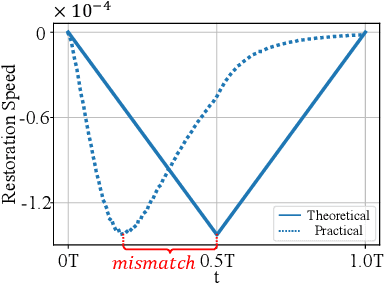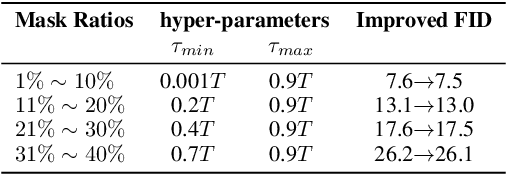Zihao Han
OCT Data is All You Need: How Vision Transformers with and without Pre-training Benefit Imaging
Feb 17, 2025Abstract:Optical Coherence Tomography (OCT) provides high-resolution cross-sectional images useful for diagnosing various diseases, but their distinct characteristics from natural images raise questions about whether large-scale pre-training on datasets like ImageNet is always beneficial. In this paper, we investigate the impact of ImageNet-based pre-training on Vision Transformer (ViT) performance for OCT image classification across different dataset sizes. Our experiments cover four-category retinal pathologies (CNV, DME, Drusen, Normal). Results suggest that while pre-training can accelerate convergence and potentially offer better performance in smaller datasets, training from scratch may achieve comparable or even superior accuracy when sufficient OCT data is available. Our findings highlight the importance of matching domain characteristics in pre-training and call for further study on large-scale OCT-specific pre-training.
AsyncDSB: Schedule-Asynchronous Diffusion Schrödinger Bridge for Image Inpainting
Dec 11, 2024



Abstract:Image inpainting is an important image generation task, which aims to restore corrupted image from partial visible area. Recently, diffusion Schr\"odinger bridge methods effectively tackle this task by modeling the translation between corrupted and target images as a diffusion Schr\"odinger bridge process along a noising schedule path. Although these methods have shown superior performance, in this paper, we find that 1) existing methods suffer from a schedule-restoration mismatching issue, i.e., the theoretical schedule and practical restoration processes usually exist a large discrepancy, which theoretically results in the schedule not fully leveraged for restoring images; and 2) the key reason causing such issue is that the restoration process of all pixels are actually asynchronous but existing methods set a synchronous noise schedule to them, i.e., all pixels shares the same noise schedule. To this end, we propose a schedule-Asynchronous Diffusion Schr\"odinger Bridge (AsyncDSB) for image inpainting. Our insight is preferentially scheduling pixels with high frequency (i.e., large gradients) and then low frequency (i.e., small gradients). Based on this insight, given a corrupted image, we first train a network to predict its gradient map in corrupted area. Then, we regard the predicted image gradient as prior and design a simple yet effective pixel-asynchronous noise schedule strategy to enhance the diffusion Schr\"odinger bridge. Thanks to the asynchronous schedule at pixels, the temporal interdependence of restoration process between pixels can be fully characterized for high-quality image inpainting. Experiments on real-world datasets show that our AsyncDSB achieves superior performance, especially on FID with around 3% - 14% improvement over state-of-the-art baseline methods.
 Add to Chrome
Add to Chrome Add to Firefox
Add to Firefox Add to Edge
Add to Edge